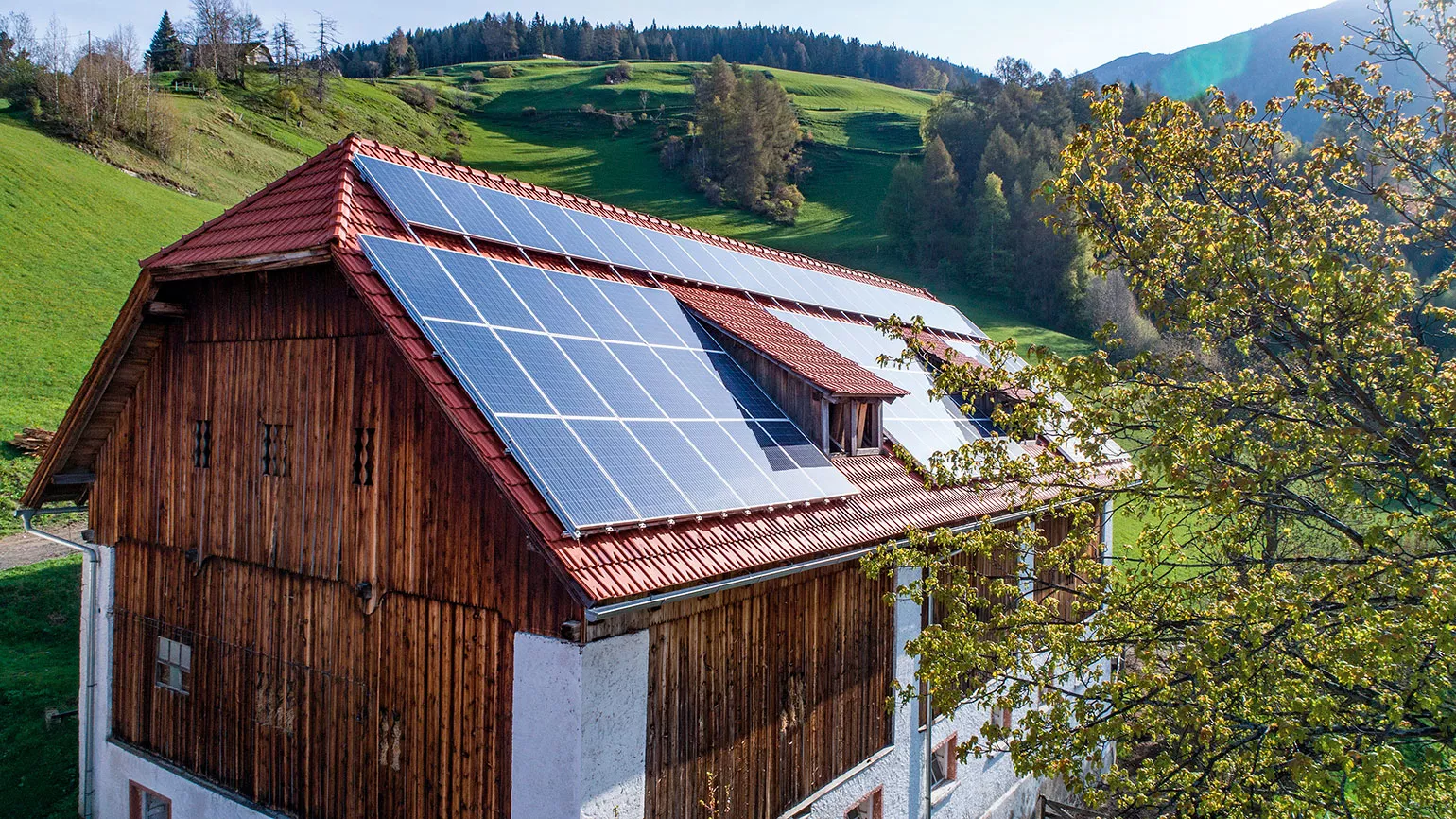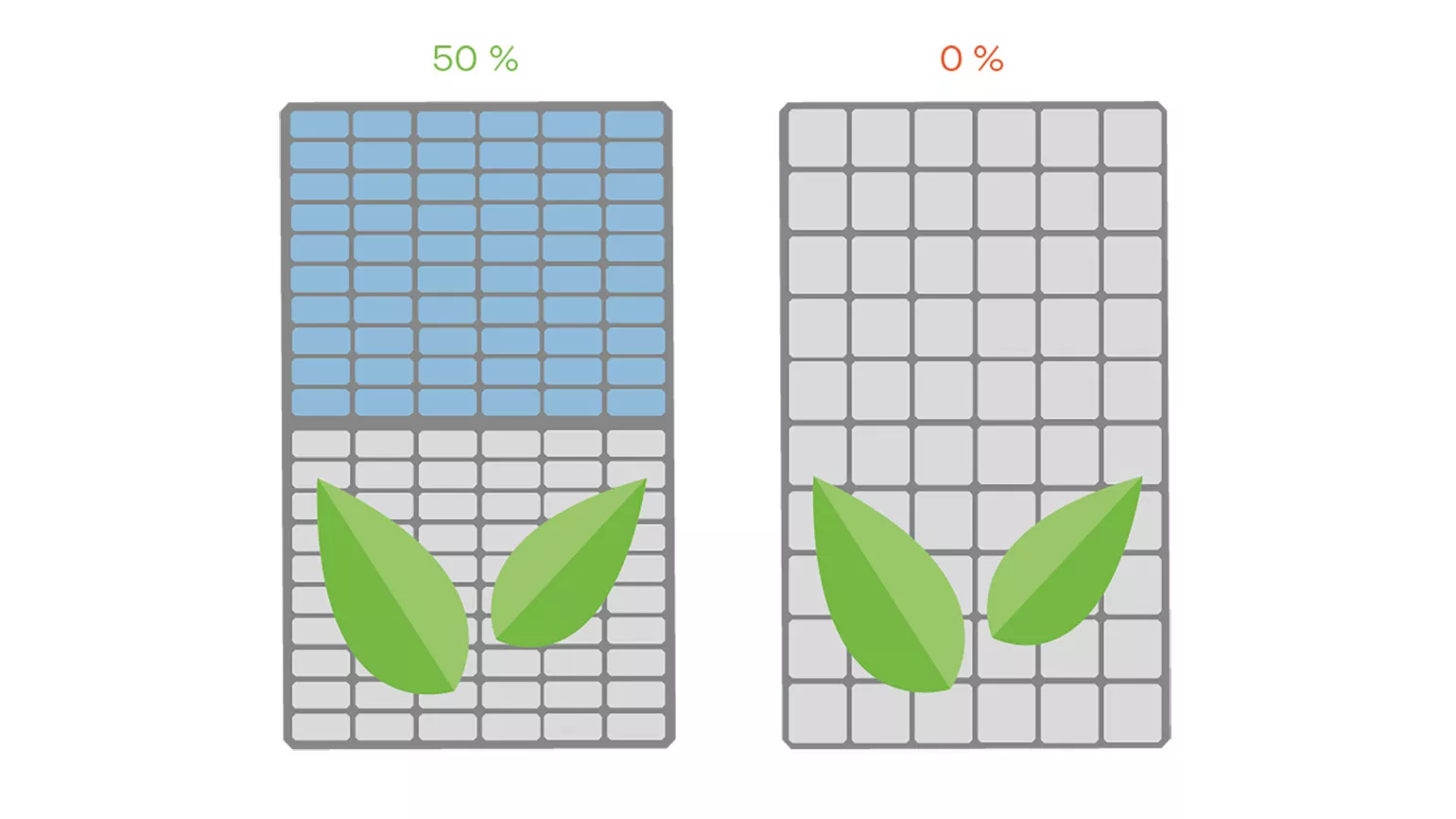PV Module Shading – a Problem of the Past?
| The more sun, the more solar power. Homeowners planning to install a rooftop PV system need to learn which conditions will ensure the system operates properly and that it generates optimum yields. Shading on solar modules is still considered one of the biggest disruptive factors, but in this blog post you’ll learn why partial shading now has only a negligible effect on the yield of a PV system. |
Impacts of partial shading on solar modules
Bright sunshine, not a cloud in the sky, and a PV system on the roof – perfect conditions for PV system owners to achieve high-yield solar energy production. But very few roofs are completely free of shading, with trees, poles, TV antennas and adjacent buildings often casting shadows on the solar modules. The result – supposedly – is lower output and yield. But a closer look quickly reveals that losses due to uneven shading actually have a negligible effect on total yield over the year. The critical factors here are ensuring correct layout of the modules combined with the right inverter.
Busting a persistent myth
It is still commonly believed that shading on solar modules – from fallen leaves, for example – will cause the entire PV system to produce no or only very little power. The idea is similar to that of a garden hose that, regardless of where it is squeezed, will produce no or only very little water. This assertion has long been outdated, since the solution to this is now built into every module in the form of bypass diodes.
Alternate route to good yields with bypass diodes
Every PV module now comes equipped with bypass diodes that act as a bridge when parts of a module are shaded. The bypass diodes are activated in these cases and made conductive by changing the DC voltage of the inverter applied to the string – thus bypassing the affected cell string of the PV module. This prevents overheating and possible hot spots while also generating a profitable yield despite partial shading.

Improvements on the solar module market
Ongoing advancements in solar modules are also helping make home rooftop PV systems even more efficient. Half-cell technology, which splits individual solar cells into two, means conventional solar modules can not only reduce power loss but also improve light utilization as well as ensuring stable functioning even at high temperatures.
Shading behavior is also improved with half-cell modules, in which bypass diodes divide the modules in the middle. If the lower or upper half of the half-cell module is shaded by leaves, for example, the other half of the module can still continue to provide full power output. In comparison, an equally shaded full-cell module would lose the output of the entire module.

More output with efficient MPP tracking algorithm
To minimize shading or mismatch loss as much as possible, string or multi-string inverters are equipped with one – or possibly multiple – maximum power point trackers (MPP trackers). Ideally, each string is furnished with one MPP tracker that continuously determines the optimum operating point of the connected strings and thus keeps the output of the PV system at maximum at all times.
Dynamic Peak Manager – efficient shading management included as standard
A smart shading management system – ideally already integrated into the inverter – ensures maximum yield despite partial shading, which means roof areas with partial shading can also be included in the layout. Dynamic Peak Manager from Fronius is an intelligent MPP tracking algorithm that detects shading and optimizes yield at the string level. To do this, it scans and analyzes the entire voltage power curve at regular, roughly 10-minute intervals, always finding the PV system’s most efficient operating point (global maximum power point).
Example of shading from a chimney
A shading simulation using independent simulation software shows that annual shading loss is small. Basically, two different categories of loss must be considered.
Module-specific partial shading loss: Due to various shading objects – in this case a chimney – sunlight is blocked and less light falls on the solar modules. This reduced light incidence cannot be optimized by any inverter, power optimizer, or microinverter; the only solution in this case is to remove the object casting the shadow.
In contrast, mismatch loss – that is, interconnection loss in strings – can be significantly improved with an intelligent MPP tracking algorithm: as shown in the table, thanks to Dynamic Peak Manager, mismatch loss is about two thirds lower than shading loss at the module level.
| Type of shading loss | Loss in % | Loss in kWh | |
| Module-specific partial shading | –0.18% |
26.07 kWh (from 14.485 kWh) |
Cannot be influenced by inverters, optimizers, etc. |
| Mismatch (interconnection/shading) | –0.06% |
8.7 kWh (from 14.485 kWh) |
Greatly reduced with Dynamic Peak Manager |
Shading results on an annual basis from the simulation with horizontally arranged PV modules
The simulation results clearly show that module-specific partial shading results in a much higher percentage loss (about 0.18%) than mismatch losses (about 0.06%). If the inverter that functions as the heart of your PV system has efficient MPP tracking and smart shading management, as all Fronius inverters do, you can be sure you are achieving optimum yields even in challenging environmental conditions, and that your hardware and software are operating in perfect harmony – without additional components or costs.
Is a power optimizer a solution?
Although DC optimizers can also improve the output of the system in the event of shading, they rarely prove cost-effective: an optimizer tries to optimize each module with its individual MPP. By controlling the voltage at the module level, a power optimizer definitely offers advantages, especially with light shading, but only as long as the bypass diodes are not activated.
As additional components, DC/DC converters themselves require energy and even consume power in standby mode, which must first be co-generated by the PV system. As a result, the additional yield achieved is often lower and therefore usually does not justify the higher investment costs. What’s more, the many additional components that must be placed on each module reduce the overall reliability of the system and thus also increase the likelihood of failure of the PV system.
In sum:Shading on PV modules cannot always be avoided, but thanks to promising advancements in the market – involving both solar modules and string inverters – shading losses can now be effectively counteracted. What matters here is the type of shading or output loss: Now there is a remedy for mismatch losses in particular, which can be caused by uneven shading of solar modules. Using integrated shading management like Dynamic Peak Manager from Fronius makes it possible to keep these losses very low. The greatest proportion of shading losses consistently results from reduced light incidence due to objects casting shadows (tree, house, poles, etc.). This cannot be reduced by DC optimizers, microinverters or other power electronics at module level – only removing the object will remedy this. Investing in additional components like DC optimizers to optimize power output is rarely cost-effective. Especially in the case of hard shading or PV systems where only a few modules are shaded, the use of power optimizers does not appear to be beneficial due to their additional energy requirement, and they also make the entire PV system more susceptible to failures. |
